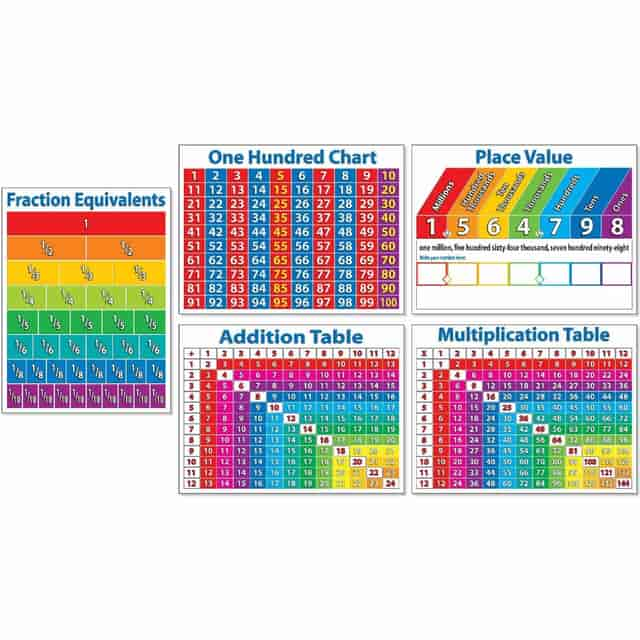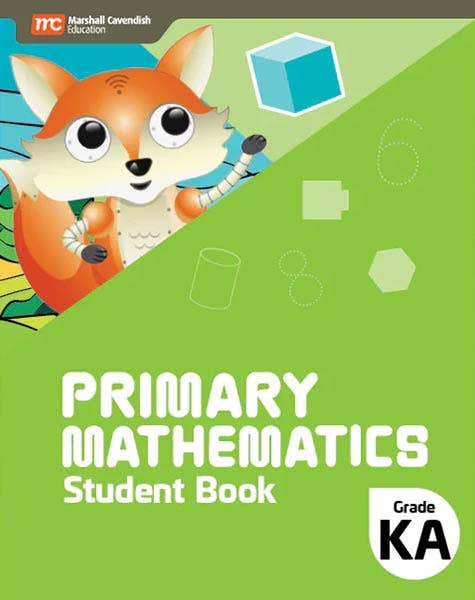How technology is transforming the way we approach struggles in primary math
Introducing the very best Faster Ways for Solving Math Issues Swiftly
In the domain name of maths, efficiency is crucial. Grasping faster ways can transform the method individuals approach problems. From leveraging the distributive residential or commercial property to employing fast multiplication techniques, these methods boost both rate and precision. In addition, identifying patterns streamlines intricate computations. As one discovers these approaches, they may reveal unexpected insights that can change their mathematical experience. What are one of the most effective techniques that can be easily incorporated right into day-to-day method?
Mastering Mental Mathematics Techniques
How can one improve their estimation speed without depending on calculators? Understanding mental mathematics techniques offers a practical remedy. By utilizing strategies such as breaking numbers into smaller sized, convenient parts, people can simplify complicated computations. For circumstances, when including two-digit numbers, rounding each number to the closest ten can make psychological enhancement easier prior to readjusting back to the initial worths.
Another efficient approach is to practice multiplication tables thoroughly, allowing quick recall of items (struggles in primary math). In addition, identifying patterns in numbers can promote faster estimations, such as utilizing the properties of also and weird numbers. Normal practice via video games and problems can even more improve these abilities, making psychological mathematics much more intuitive
Ultimately, cultivating confidence in one's arithmetic abilities allows for quicker decision-making and boosts total mathematical proficiency. By integrating these methods, any individual can significantly improve their calculation speed.
Utilizing the Distributive Residential Property
The Distributive Residential property is an essential idea in maths that streamlines estimations by allowing multiplication across addition or reduction. It is necessary for students to understand its application via useful instances, which can enhance their problem-solving abilities. Additionally, acknowledging usual mistakes can additionally strengthen their understanding and avoid mistakes in future computations.
Recognizing the Distributive Home
Mastering the distributive building can considerably streamline mathematical estimations. This essential home states that when multiplying a single term by a sum or difference, one can distribute the multiplication across each term within the parentheses. For example, in the expression a(b + c), one can revise it as abdominal muscle + air conditioning. This method not just simplifies computations however also enhances understanding of just how numbers engage (struggles in primary math). The distributive home is specifically useful in algebra, where it helps in streamlining expressions and resolving equations. Additionally, it prepares for much more complex principles, such as factoring and polynomial operations. By comprehending the distributive building, students can create a strong structure for dealing with a vast array of mathematical obstacles successfully
Practical Examples Illustrated
Why is it vital to apply the distributive home in practical scenarios? The distributive property permits individuals to streamline complex estimations, making problem-solving more effective. For example, when calculating the complete price of several items, one can use the expression 5(2 + 3) to find the overall cost of five items priced at $2 and $3. By dispersing, the estimation ends up being 5 × 2 + 5 × 3, yielding a quicker result of $25. One more example remains in algebra, where simplifying expressions like 3(x + 4) can be accomplished with distribution, leading to 3x + 12. Such applications illustrate the effectiveness of this home in different real-world situations, enhancing both rate and precision in mathematical analytic.
Usual Blunders to Prevent
The distributive residential property is a powerful tool in mathematics, usual mistakes can lead to wrong outcomes. One regular error occurs when pupils fail to remember to distribute the coefficient per term within parentheses. As an example, in the expression 3(x + 4), stopping working to use the building appropriately can bring about omitting the reproduction, producing an incorrect solution. One more blunder includes defalcating the home by adding rather of increasing, particularly when negative indicators are involved. Furthermore, students might overlook to streamline the result, which can obscure errors made throughout distribution. Recognizing and staying clear of these pitfalls can improve analytic efficiency and precision when making use of the distributive property in different mathematical contexts.
Quick Reproduction Shortcuts
In the domain name of quick multiplication faster ways, techniques like multiplying by powers of 10 and the increasing and halving approach stand apart. These techniques can substantially simplify computations, making them extra available. Comprehending these faster ways can boost efficiency in mathematical analytical.
Increasing by Powers of 10
When increasing by powers of 10, the procedure comes to be remarkably straightforward, as the operation mainly includes moving the decimal point. Increasing a number by 10 needs relocating the decimal one place to the right, while increasing by 100 requires a change of two locations. This simplicity reaches bigger powers, where each added zero shows an additional decimal shift. Multiplying 5.6 by 1,000 outcomes in 5,600. This approach considerably boosts rate and precision, as people can swiftly envision the result without complex computations. Such efficiency is particularly advantageous in mental math or when time is restricted, permitting quick problem-solving in various mathematical contexts. Understanding this strategy is vital for anybody aiming to boost their math skills.
Increasing and Halving Technique
The Doubling and Cutting in half Technique offers an effective method for fast reproduction, especially when taking care of even numbers. This strategy includes transforming a reproduction trouble right into a simpler kind by either doubling among the numbers and cutting in half the other. For instance, to calculate 16 × website here 25, one can cut in half 16 to obtain 8 and double 25 to get 50, resulting in 8 × 50, which amounts to 400. This technique streamlines computations, making them extra workable. It is specifically helpful in psychological math, enabling people to overcome problems promptly and accurately. By leveraging this technique, students and experts can boost their click over here now numerical dexterity, thereby enhancing total efficiency in mathematical tasks

Reliable Department Strategies
Division typically positions challenges for numerous learners, employing efficient strategies can substantially streamline the process. One effective method is the usage of suitable numbers, which entails rounding the divisor and reward to less complicated values that are close to the initial numbers. This strategy makes psychological computations more convenient. An additional technique is the estimation technique, where students can locate a harsh answer prior to carrying out the exact department, supplying a useful standard for accuracy.
Additionally, the long department technique continues to be a staple for splitting larger numbers. By damaging the process right into smaller, extra digestible actions, learners can keep clarity. The repeated reduction technique can also be helpful, specifically for those who deal with more abstract concepts. By systematically deducting the divisor from the returns, individuals can picture the process. Generally, these strategies can improve department skills, causing quicker and much more precise problem-solving capabilities.
Rapid Addition and Subtraction Approaches
How can students enhance their speed and precision on top of that and subtraction? One efficient approach is to utilize mental mathematics methods, such as breaking numbers into smaller sized, more manageable parts. For circumstances, when including 47 and 36, one can first add 40 and 30 to get 70, after that include the remaining 7 and 6 to show up at 83. This approach simplifies computations and lowers mistakes.
Another technique includes utilizing the number line for aesthetic students, aiding them to see the partnerships between numbers and improve their comprehension. Furthermore, practicing with tools like flashcards can strengthen fast recall of fundamental sums and differences.
Learners can benefit from acquainting themselves with benchmark numbers, such as rounding to the local 10, which enables for quicker evaluations. By integrating these techniques into their technique, students can considerably enhance their speed and accuracy in basic arithmetic procedures.
Leveraging Estimate for Quick Calculations
Estimate functions as a powerful device for improving calculation speed, enhancing psychological mathematics approaches efficiently. By rounding numbers to their closest entire values, people can simplify complicated estimations, making it easier to reach an approximate outcome swiftly. For circumstances, when faced with a problem like 198 + 267, rounding to 200 + 270 returns a quick price quote of 470, enabling the solver to evaluate the precision of the final answer.
In addition, evaluation is particularly valuable in situations involving reproduction and division. By rounding factors to less complex numbers, one can rapidly determine approximate products or ratios. This method not just saves time yet additionally helps in identifying potential mistakes in calculations.
Acknowledging Patterns and Formulas
Patterns and formulas are essential tools in mathematics that allow individuals to fix troubles much more successfully. Recognizing these patterns enables students to determine relationships between numbers and principles, which can simplify complicated estimations. As an example, acknowledging the square formula (ax ^ 2 + bx + c = 0) facilitates quick remedies to various equations.
Patterns in series, such as math or geometric developments, help individuals anticipate future terms without considerable calculations. Formulas, on the other hand, work as shortcuts, enabling faster analytical by encapsulating complicated connections right into convenient expressions.
Regularly Asked Inquiries
Just How Can I Boost My Emphasis While Addressing Mathematics Troubles Promptly?
To boost emphasis while fixing mathematics issues swiftly, one can get rid of diversions, established particular goals, practice mindfulness techniques, take regular breaks, and keep a regular research regimen to improve concentration and psychological quality.
What Devices or Apps Aid with Quick Mathematics Problem-Solving?
Numerous devices and apps, such as Photomath, Microsoft Mathematics Solver, and Desmos, improve quick mathematics analytical. These resources offer detailed options, graphing capabilities, and instantaneous feedback, making them important for pupils and professionals alike.
Are There Specific Mathematics Shortcuts for Standardized Examinations?
Yes, certain math shortcuts for standard tests consist of methods like estimation, recognizing number buildings, utilizing the procedure of elimination, and mastering usual formulas. These strategies view website improve speed and precision, improving total test efficiency.

Exactly how Do I Exercise Math Shortcuts Successfully?
To exercise math shortcuts properly, individuals ought to consistently resolve varied problems, use on-line resources, and engage in timed drills. Consistency and representation on blunders enhance understanding, ultimately causing boosted rate and accuracy in estimations.
Can Shortcuts Be Applied to Complicated Math Problems?
Shortcuts can certainly be related to complicated mathematics problems, although their efficiency differs. Proficiency of fundamental principles and strategic thinking enables individuals to simplify processes, making it easier to tackle elaborate computations effectively.
By utilizing methods such as damaging numbers right into smaller sized, workable components, individuals can simplify complicated calculations. Additionally, recognizing patterns in numbers can help with faster calculations, such as using the homes of even and odd numbers. Estimation offers as an effective device for improving calculation speed, enhancing psychological mathematics techniques efficiently. By rounding numbers to their closest whole worths, people can simplify complex estimations, making it much easier to show up at an approximate result quickly. Identifying these patterns enables learners to identify partnerships between principles and numbers, which can streamline complex estimations.